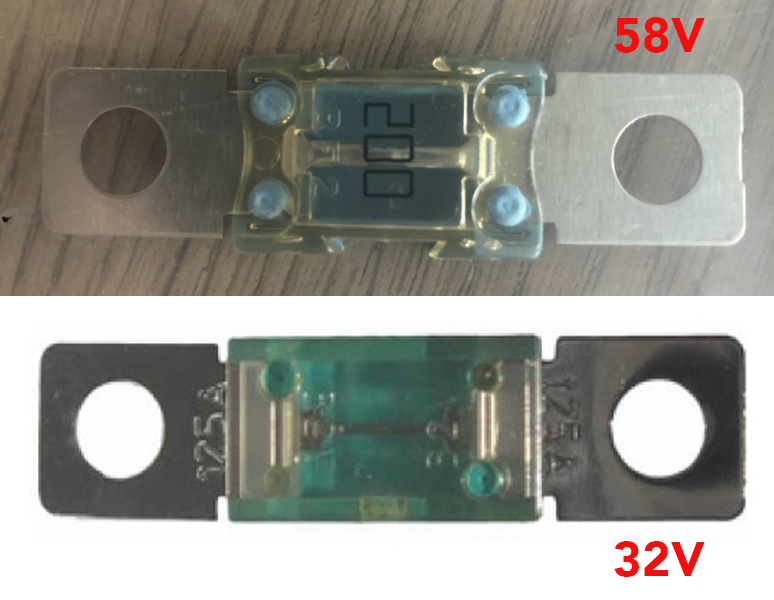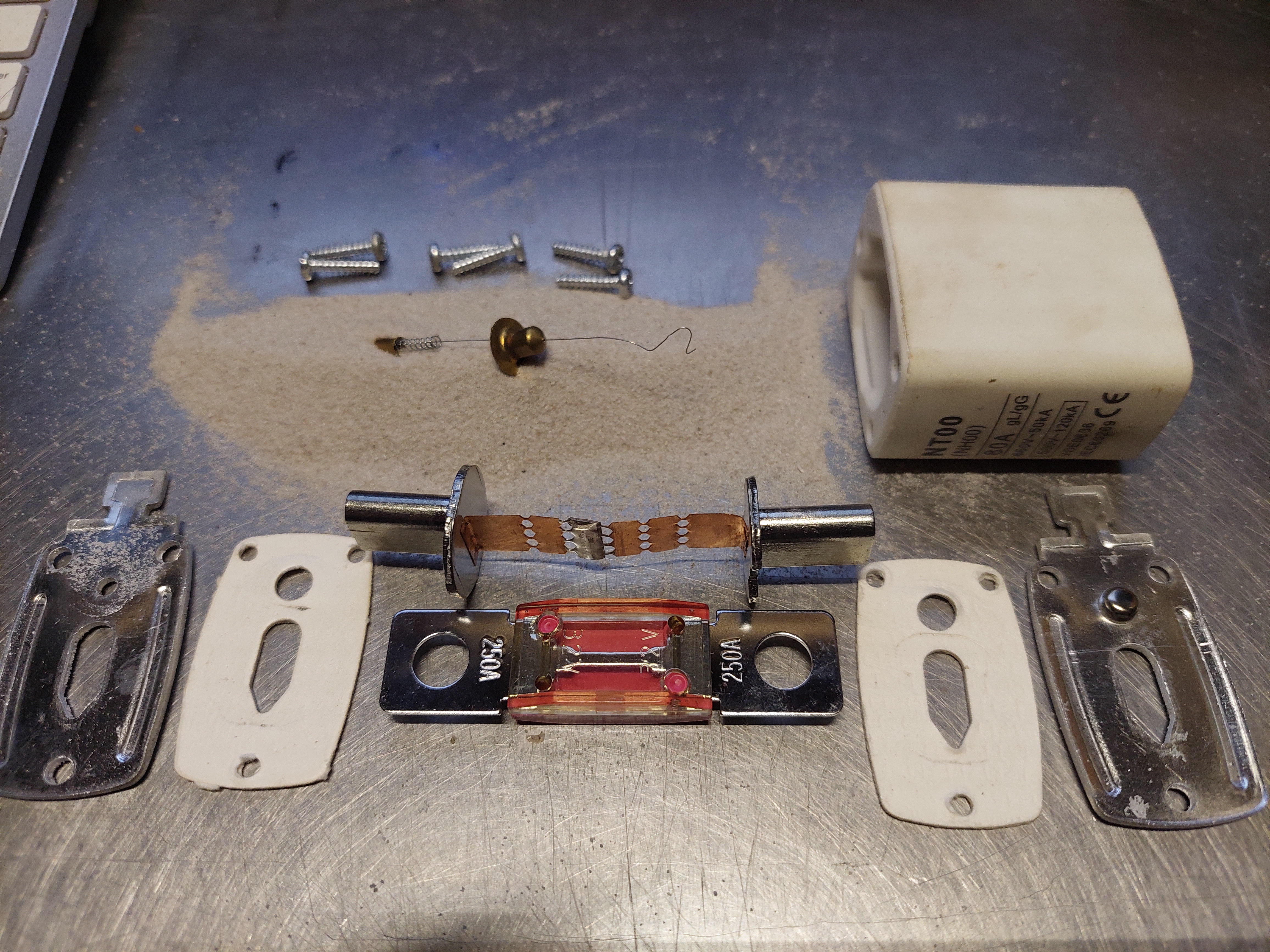hi all! is it possible to use mega fuse 32V for 48V systems. Needed to protect MPPT 250/100. Thanks
- Home
- Anonymous
- Sign in
- Create
- Spaces
- Grafana
- Node-Red
- Unsupported topics
- Questions & Answers
- Modifications
- Communauté francophone
- Deutschsprachiger Bereich
- Preguntas en Español
- Explore
- Topics
- Questions
- Ideas
- Articles
- Badges
question
Not really the arc protection is really where the problem is there.
The recommendation is between 120A and 140A there should be something in the 58v range for you there.
Here are the Mega fuses.

Where do you see the "important" difference that would disqualify 32V version in 48V system?
Do what you like, it's your money and the life of your loved ones.
@Kuban_invertor
It's to do with the blast capacity (also known as rupture capacity) of the fuse. As Alexandra mentioned, a higher Voltage can cause a bigger arc and so the design of the fuse needs to be able to accommodate and contain the blast.
I would always recommend using properly rated fuses for the application.
For the same reason that DC rated protection devices are required in DC applications and not to use devices which are only rated for AC.
Also, bear in mind that the fuse is primarily there to protect the wiring, not so much the MPPT.
thanks for answers! if I understand correctly, the only difference is in the choice of "chamber", where the arc occurs and the fuse blows. price and true in more than 5 times )
The funny thing is that this "chamber" is identical in both versions. :)
I also drew attention to this. The official supplier of Victron told me - put 32V and don't worry)
Ask your insurance what they recommend.
58V doesn't cut it for an 18S battery.
If you google "SF51" & "70V" you will find mega fuses (51mm centres) up to 500A rated for 70V.
As others have said, breaking or rupture capacity is the real problem with mega fuses of any rating.
Depending on the chemistry and total voltage of your batteries, the fault current of a LiFePO4 battery can exceed 20kA hence the need for Class T fuses or other industrial fuses like NHxx. Anything else will just arc and catch fire!
YMMV.
Kind regards
John
Hi Ludo
1kV/mm is the situation where high voltage causes a dielectric breakdown allowing current to start flowing.
Unfortunately, the issue here is different. When a fuse blows the current was already flowing and an arc will form at much lower voltages, worse with DC. Just try opening a switch on a DC circuit with a moderate load. It is quite easy to get an arc which, if you sustain the gap, will burn through the contacts in no time.
This is why HRC fuses exist and should be used where the source has an incredibly low source resistance e.g. LiFePO4.
Take for example the Pylontech US3000C - it has a short circuit current rating of 4000A but if you have 5 of these in parallel you are looking at 20kA.
Other battery solutions will have higher or lower ratings.
But the Mega Fuse has an interrupt rating of 2500A at 70V so I suggest they are not suitable even for a single unit. CNL fuses are similar.
Also remember what you are protecting - it's not just the equipment, it's the wiring too. If you have some batteries connected to some MPPT charge controllers and a hybrid inverter/charger then any of that wiring could see a fault current / short circuit fed by the batteries. So, just because the MPPT can only supply say 100A, and we protect that with a 120A fuse for example, if a short occurred at the MPPT connection the fault would be supplied by the batteries and hence any fuses in the circuit must be rated for the potential short circuit current.
Kind regards
John
Maybe this here is also interesting:
Rated for 5kA @ 60V... That should be fine for 48V systems.
edit: Ok I see that it's only available in 450A rating. Could be fine for short circuit protection?!
Related Resources
question details
36 People are following this question.

